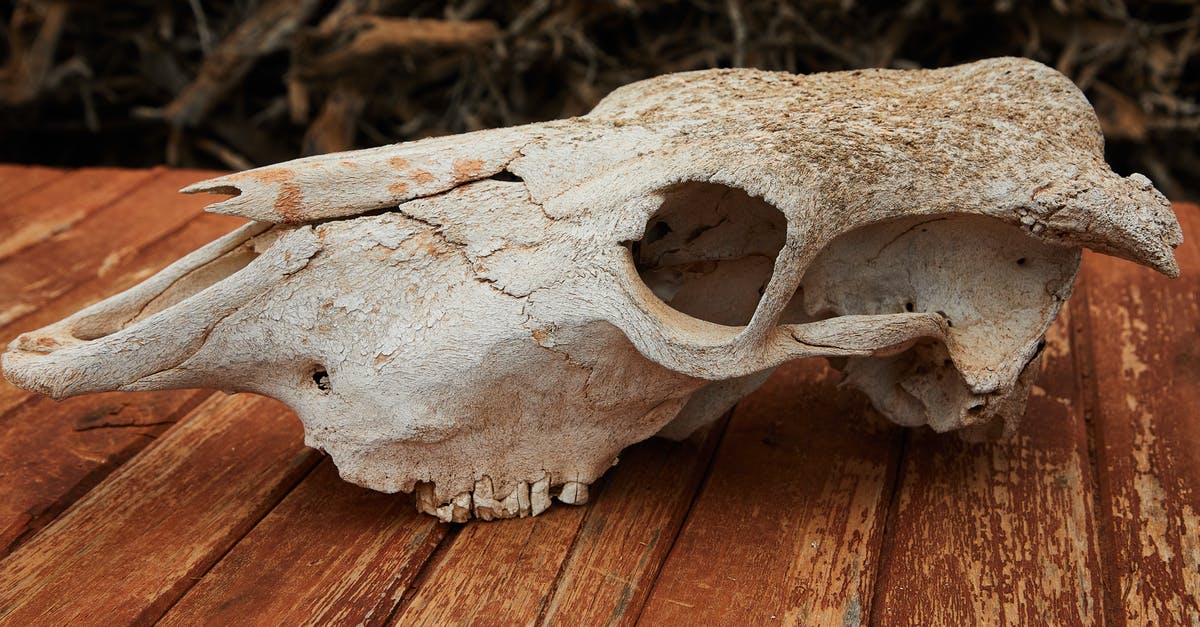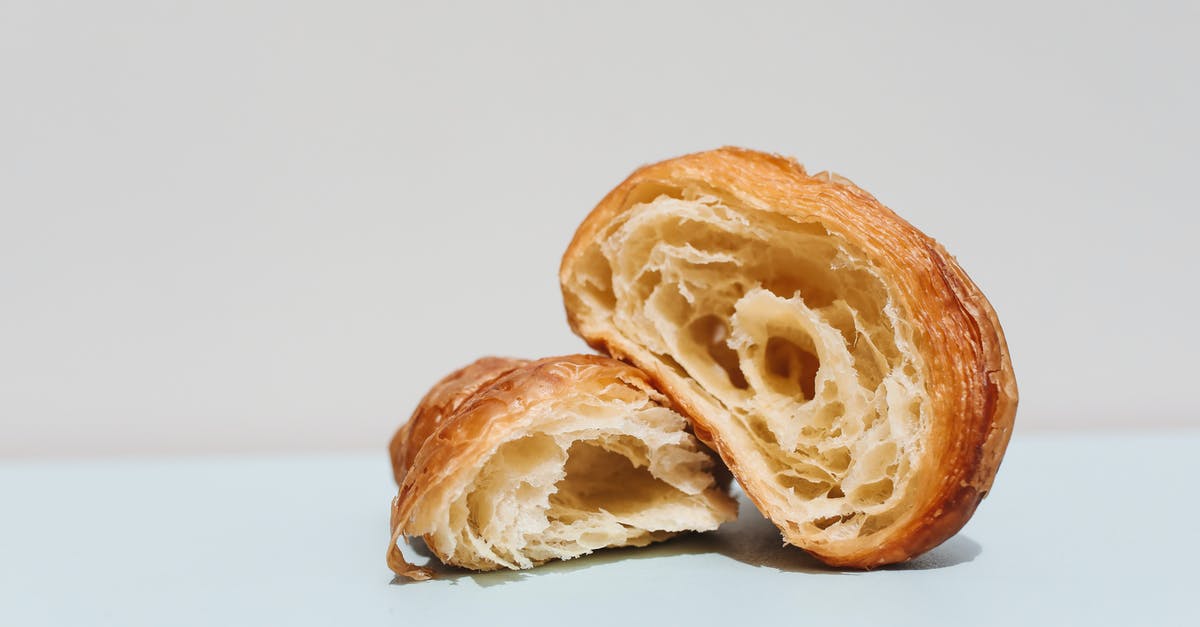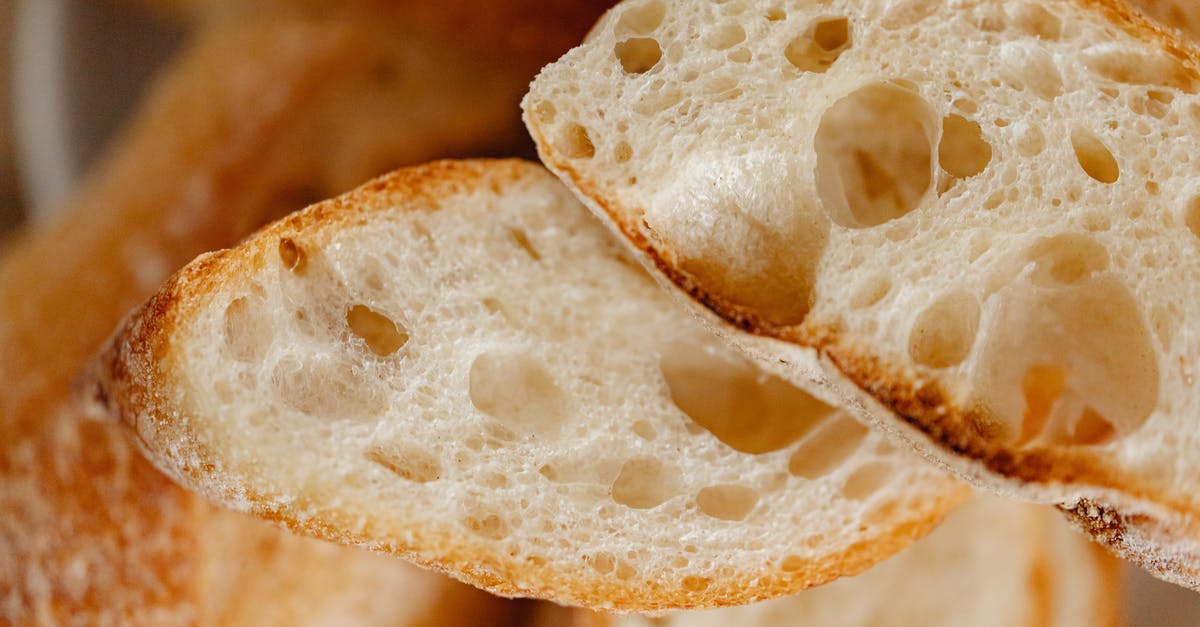What ensures big holes in my bread?

Is it a high hydration rate? Minimal kneading? High-protein flour to hold hydration?
Best Answer
There are lots of theories about this topic. Basically, to get large holes, you want a dough that has enough air to expand greatly, enough structure to support that expansion, and somewhat uneven distribution of the air/structure to produce various size holes.
Some things that will help:
Relatively high hydration. It's not strictly necessary, but it allows more random gluten connections to be made, making for a more chaotic internal structure. Hydration needs to be compared to flour gluten content. High gluten is not generally necessary, but a good bread flour will help. Nevertheless, it is possible to produce large holes in short or squat loaves (baguettes, ciabatta, focaccia) even with AP flour. The high protein is usually only necessary to get a high-rising loaf. Lower protein flour loaves may still have relatively big holes, but they are more likely to spread rather than rise high when baked free-form.
Gentle kneading at the outset. You really only need to mix until ingredients are thoroughly combined and distributed. Extended kneading at that point is not only unnecessary, but it can encourage the initial gluten connections to be really even (and not the random network of strands and holes).
Instead of kneading at the outset, do stretch-and-fold maneuvers periodically during the bulk rise. They will add a lot of strength while minimally disturbing the emerging gluten networks. And they will encourage more random connections between each stretch-and-fold maneuver.
Don't skimp on the bulk rise time. This is when the big air bubbles and random gluten networks form. Many people even do this overnight in the fridge or follow the "no knead" bread recipes that just let it sit out for many hours.
Don't "punch down" the dough after the first rise. Instead, your goal is to shape the bread as efficiently as possible without destroying the random network of holes that is present. Contrary to popular belief, you don't necessarily need to be very gentle with the dough at this phase (though with some types of bread, like ciabatta, it can help). It doesn't matter so much if you lose some air, as long as you are stretching the gluten to add structure. So, don't deliberately try to get air out, but instead focus on stretching and folding over to get a taut, elastic dough in preshaping. Or, be gentle -- the dough may not rise quite as high, but it should still have large holes.
If you do lose some air during shaping, don't skip a bench rest. A bench rest essentially allows another "stretch-and-fold" exercise that adds strength. Preshape the dough until you can feel it become a bit taut. Then cover the dough and wait 10-15 minutes. Then do the final shaping of the dough, being sure that the surface is taut, which will allow the strongest final rise and increase oven spring. Again, as long as your yeast is strong, the big holes will return even if you lose a little air here. In most cases, being gentle and "trying not to disturb the bubbles" will actually result in less of a final rise and therefore smaller bubbles in the final loaf.
Use any techniques that will increase oven spring. Anything that gets you a bigger loaf means more room for the bubbles to get bigger. That includes: steaming the oven, baking on a preheated stone, slashing the loaves properly right before the bake, baking on high heat (at least for the first 10 minutes or so), etc.
Pictures about "What ensures big holes in my bread?"



Quick Answer about "What ensures big holes in my bread?"
Anything that gets you a bigger loaf means more room for the bubbles to get bigger. That includes: steaming the oven, baking on a preheated stone, slashing the loaves properly right before the bake, baking on high heat (at least for the first 10 minutes or so), etc.How can I make my bread more holey?
Here are the steps to follow if you want a fine crumb with small even bubbles:What gives bread big holes?
Too much flour or oil when shaping When shaping your loaf try to avoid excess flour. This flour can prevent the dough from sealing onto itself. This can create large holes in the final product as you have now trapped a big air pocket inside the loaf.Why does my bread not have holes?
You need a wet dough to get holes. Wet dough is lighter than dry dough and it moves more easily and more quickly. 2. You need to do the stretch and fold throughout the first rise of the dough.3 Tips to Fix TOO BIG Holes in Your Sourdough Bread
More answers regarding what ensures big holes in my bread?
Answer 2
There is no short or easy answer to this. I spent around 15 years learning to master this. In short, the main factors are:
- The right flour and balance between water and flour - depends greatly on flour quality.
- The right kneading - enough to make the gluten into an elastic structure with long threads, but not too much as it will break the structure.
- The right handling of the wet dough - avoiding collapsing the gluten structure.
- The right baking - 25-30 minutes at 225-250 degrees on a baking stone.
You can read a detailed description of my efforts here (including pictures and videos): http://www.rkursem.com/food/bread/fluffy-bread/
Sources: Stack Exchange - This article follows the attribution requirements of Stack Exchange and is licensed under CC BY-SA 3.0.
Images: Laker, Rajesh TP, Polina Tankilevitch, Karolina Grabowska
